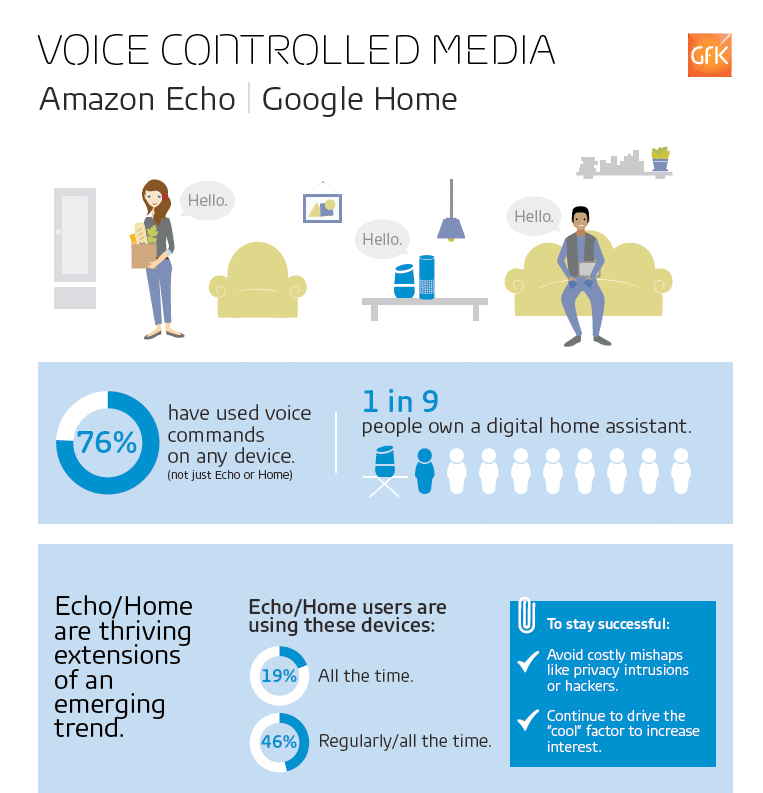3/4 of US consumers have used voice commands to operate digital devices
April 28, 2017
 Though they are breaking new ground in many ways, “digital home assistants” – such as Amazon Echo and Google Home – are also leveraging consumers’ proven comfort with using speech to operate digital devices.
Though they are breaking new ground in many ways, “digital home assistants” – such as Amazon Echo and Google Home – are also leveraging consumers’ proven comfort with using speech to operate digital devices.
New research from GfK shows that 76% of US consumers (ages 13 to 64) have used voice commands on any device. Within this group, 69% say they have used speech to operate a smartphone; tablets (21%), car radios/navigation (20%), computers (18%), and TV sets (14%) registered much lower levels.
Less than two years after introduction, digital home assistants (DHA) have yet to make more than a small dent in the US market, with just 11% of consumers saying they own either an Amazon Echo/Dot (10%) or Google Home (2%). And, among non-owners, intent to buy a DHA is low (just 3% are “very likely” to purchase one in the next year).
The findings come from GfK’s new “Commanding Media” report, one of an annual series of reports known as The Home Technology Monitor®. The study explores the general use of voice commands with technology devices, along with a deep dive into the usage of Amazon Echo and Google Home devices.
The report shows that almost half (46%) of those who own DHAs say they use the devices at least regularly, and two in ten (19%) turn to them “all the time.” Playing music is by far the most common application for the assistants, cited by two-thirds (63%) of DHA owners. (See list below.)
Top 10 ways people are using digital home assistants
- Play streamed or downloaded music
- Ask a question
- Get news/weather/traffic
- Get sports news
- Control lights/thermostat/fans
- Check/revise calendar/to do lists
- Play videos
- Search for/play podcasts
- Read/compose emails/texts
- Order products from Amazon or elsewhere
Source: “Commanding Media 2017,” GfK
“The use of voice opens up new relationships between consumers, device makers, voice service providers, and advertisers that will need to be carefully navigated,” said David Tice, SVP Consulting at GfK. “With these devices integrated so closely into their lives, consumers will be especially sensitive to false steps –whether it be violating the privacy of conversations, prioritizing search results based on payments, promotion of certain shopping services above others, or enabling intrusive advertising.”































